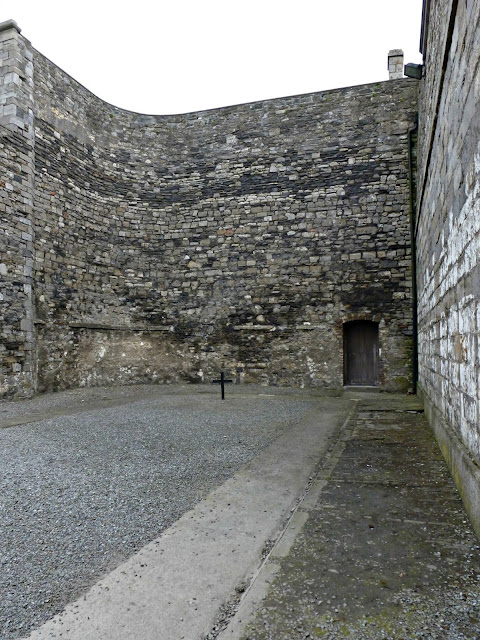At the end
of last week on April 25 and 26 our group had the privilege of taking a two-day
trip to Northern Ireland to spend some time in Belfast and various places along
the beautiful coast in the north. Though we were very blessed to have this opportunity
to take this trip, it became evident to us that Belfast was a city filled with
brokenness.
Beginning
in 1969 and lasting up until the end of the 20th century was the
period in the history of Belfast known simply as the Troubles. This was the name
for all of the violence that took place between the Protestants and the
Catholics in Belfast during this time. It has been estimated that over 1,500
people have been killed in political violence during the time of the Troubles.
There has been much unrest and division in Belfast and Northern Ireland as a
whole concerning the separation between Protestants and Catholics, as the
Protestants want to remain loyal and under the control of Britain, while the
Catholics are not in favor of the rule by the British.
When we
arrived in Belfast a man named Noll got on our bus and spoke to us about his
past in the Ulster Volunteer Force, a group that resisted the Republic and
wanted to stay loyal to Britain. Noll was involved in the UVF as a young adult
and aided in the death of Catholics, eventually he served sixteen years in
prison. It was very interesting to hear the perspective of someone from the
north. After Noll left the bus, our bus driver Brian gave us his perspective on
the same things that Noll spoke about. Throughout this time Brian and Noll
spoke to each other and displayed great respect for one another, something that
you would be rare to see between a man from the Republic and the North not too
long ago. One of the things that we saw and that was talked about on our short
tour of Belfast were the peace walls that stood in the city and were covered
with graffiti, serving as a barrier between the Protestants and Catholics.
People on either side would run sideways to throw bombs over accurately enough
to land in a chimney on the other side of the wall.
While in
Belfast we also had the chance to hear from Doug Baker, an American man who has
been living in Belfast for the past few decades to help work towards
reconciliation between the Protestants and Catholics. Doug did a wonderful job
of clarifying the situation for us and informing us of unique approaches to
naturally integrating the two groups of people to lead to a more unified group
of people eventually in Belfast. This divide, while mainly focused in Belfast,
is something that is very much present in Northern Ireland as a whole. The
Troubles seem to have shaped the attitudes and perceptions of people in
Belfast, and reconciliation is getting closer. However, Doug made an excellent
point when saying that just because there is an absence of violence does not
mean that there is peace.
When reflecting
on our trip to Belfast, we really resonated with what Doug had to say about the
church historically being a lot of the problem in the situation when the church
should really be a part of the solution, which is being worked towards more
now. Overall, we felt like the city was a sad and broken place, and it was
somewhat difficult for us to understand that all of this unrest is not
something that was only in the past but it still very much present today.
A typical residential street in the Belfast area
Unionist mural
A stretch of murals along the Peace Wall in Belfast












